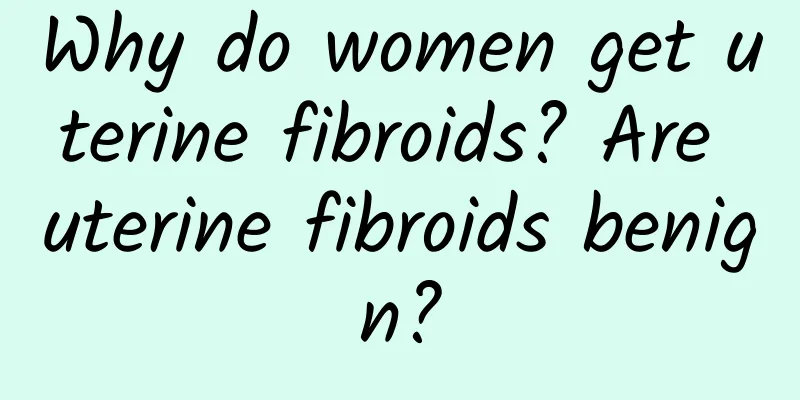Why do women get uterine fibroids? Are uterine fibroids benign?

|
According to statistics, many middle-aged women over 35 years old suffer from uterine fibroids. The probability of uterine fibroids getting worse is very small, generally less than 1%. So why do people get uterine fibroids? Who is more likely to get it? Uterine fibroids are a benign multiple tumor that is not contagious. Women aged 30-55 rarely develop uterine fibroids before the age of 20-60 and after the age of 60; the incidence rate can be as high as 70%. Its occurrence is related to estrogen levels. Young patients have high estrogen levels and are more likely to develop this disease; after menopause, hormone levels decrease and fibroids can disappear. The occurrence of uterine fibroids is related to the following factors: (1) Reproductive factors: Women who have not given birth are more likely to develop uterine fibroids than women who have given birth; Oral contraceptives: Contraceptives containing estrogen can stimulate the growth of uterine fibroids; (3) Obesity: Adipose tissue can also produce estrogen, and uterine fibroids rely on estrogen for growth; (4) Family history: sisters, daughters, and mothers of patients with uterine fibroids may also be ill; (5) Mental factors: Excessive work stress, excessive pressure or family discord can lead to ovarian dysfunction and uterine fibroids. So what kind of people are more likely to get it? The first category is people who are affected by genetic factors, which manifests as racial differences and family clustering. The second category is people who have hyperfunctioning ovaries. The third category is related to parity. The incidence of uterine fibroids is inversely proportional to parity. The fourth type is affected by physical constitution. The fifth category is related to life. The first is obesity. Studies have shown that because obese people are more likely to synthesize estrogen, the risk of developing fibroids increases by 21% for every 10 kg increase in weight. |
<<: Why do women get uterine fibroids? What are the pathogenic factors of uterine fibroids?
>>: Why do women get uterine fibroids? How to treat uterine fibroids
Recommend
The endometrium is 14mm thick and I haven't had my period for two months. What should I do?
The endometrium is 14mm thick. If you haven't...
What should patients who have undergone abortion pay attention to in their daily lives?
The health care of abortion is very important for...
Treatment of acute and chronic adnexitis
Adnexitis can be divided into acute and chronic t...
How much does it cost to treat congenital absence of vagina?
How much does it cost to treat congenital absence...
Obesity caused by excess fat! 3 Teas with Warming Ingredients
"Doctor, why does my face look swollen, and ...
How do we prevent vaginitis
The incidence of vaginitis has shown a clear incr...
What is cervical cyst?
Women's body structure is very special. Once ...
What are the differential diagnosis methods for endometrial tuberculosis?
When it comes to endometrial tuberculosis, many w...
How much is the total cost of hyperprolactinemia surgery?
How much is the total cost of hyperprolactinemia ...
The first menstrual period after miscarriage is very important
After a miscarriage, the female body needs to go ...
Experts tell you: The horror of ectopic pregnancy!
Ectopic pregnancy is a very scary disease. It is ...
The cause of ovarian cysts has a huge impact on women's fertility
As the incidence of female ovarian cysts increase...
What causes pelvic peritonitis in women?
Pelvic peritonitis mainly includes endometritis, ...
Fever can cause abnormal vaginal discharge
Fever may cause abnormal vaginal discharge. The m...
Did you know that chronic pelvic inflammatory disease can lead to ectopic pregnancy?
Can chronic pelvic inflammatory disease lead to e...









